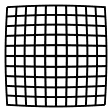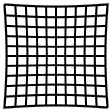Camera properties dialog box
 You
use the Camera properties dialog
box to describe the camera you used to capture the images.
You
use the Camera properties dialog
box to describe the camera you used to capture the images.
 Camera type:
Camera type:
 Correct barrel distortion
Correct barrel distortion
 Correct brightness falloff
Correct brightness falloff
 Projection
Projection
 Load settings from profile:
Load settings from profile:
 Note for users of V3.0
Note for users of V3.0
35mm — Select this option if you used a 35mm camera and scanned negatives, transparencies or prints.
APS film scan — Select this option if you used an APS camera and scanned full frame negatives or transparencies.
APS hdtv print — Select this option if you used an APS camera and scanned HDTV format prints (APS H).
APS classic print — Select this option if you used an APS camera and scanned Classic format prints (APS C).
APS panoramic print — Select this option if you used an APS camera and scanned Panoramic format prints (APS P).
Digital camera — Select this option if you used a point-and-shoot digital camera.
Digital SLR — Select this option if you used a digital camera with interchangeable lenses.
Other digital camera -- using 35mm equivalent — Select this option if you used a digital camera that is not in the camera library and you know (or can guess) the 35mm equivalent focal length. If you are unfamiliar with the term “35mm equivalent focal length,” please read “What is ‘35mm equivalent focal length?’” at www.panoramafactory.com/equiv35/equiv35.html.
Other digital camera -- using focal length multiplier — Select this option if you used a digital SLR that is not in the camera library and you know the focal length multiplier for your camera. The focal length multiplier is a number that relates the focal length of the lens to its 35mm equivalent.
Other digital camera -- using sensor dimensions — Select this option if you used a digital SLR that is not in the camera library and you know the dimensions of the imaging sensor (CCD or CMOS array).
Swing lens or rotational camera — Select this option if you used a swing lens or rotational panoramic camera.
Other film size — Select this option if you used some other type of camera (e.g. medium format).
Make
and Model
If you selected Digital
camera or Digital
SLR choose your camera's Make (manufacturer) and Model
from the drop down lists.
If your digital camera is not available, you should choose one of the following camera types instead:
Other digital camera -- using 35mm equivalent
Other digital camera -- using focal length multiplier
Other digital camera -- using sensor dimensions
Film
dimensions
If you selected Other film size enter the
width and height of the film image in millimeters.
If you selected Other digital camera -- using sensor dimensions enter the dimensions of the imaging sensor (CCD or CMOS array).
For 35mm and APS cameras, the width and height of the film image is displayed for your information.
The film dimensions controls are not needed for other types of cameras.
Focal
length multiplier
If you selected Other
digital camera -- using focal length multiplier, enter your
camera’s focal length multiplier value. This is a multiplying factor that
relates your camera’s true focal length to its 35mm equivalent value. The
focal length multiplier should be printed in the owner’s manual for your
camera.
Horizontal
field of view (degrees)
If you selected Swing lens or rotational
camera, enter the angular width of your images in degrees. This
value is required to compute the field of view of the completed panorama. It
is important to enter an accurate value if you intend to export your images to
a VR format or if you wish to use the Perspective projection option.
Document
stitching
You should select this checkbox if you are using the Swing
lens or rotational camera option to stitch scanned documents as
described in some of The Panorama Factory Forum and FAQ articles. Selecting Document
stitching together with Swing lens or rotational camera disables
image warping and enables you to stitch your documents without entering a value
for the field of view.
Focal length
Automatic
Select this checkbox to request The Panorama Factory to determine
the focal length automatically.
Focal length
Enter the focal length of the lens in millimeters.
If you selected an APS camera, enter the actual focal length. DO NOT enter the 35mm equivalent focal length.
If you selected Digital SLR, Other digital camera -- using focal length multiplier or Other digital camera -- using sensor dimensions, enter the actual focal length. DO NOT enter the 35mm equivalent focal length.
If you selected Digital camera or Other digital camera -- using 35mm equivalent, enter the 35mm equivalent focal length focal length.
You don't need to specify the focal length for swing lens or rotational cameras.
If you are unfamiliar with the term “35mm equivalent focal length” please read “What is ‘35mm equivalent focal length?’” at www.panoramafactory.com/equiv35/equiv35.html.
If you do not know the focal length, don’t worry. Just select Automatically detect focal length and The Panorama Factory will try to determine the focal length for you.
I guessed the focal length — The Panorama Factory will try focal lengths from 50% less than the number you entered to 50% more.
I am pretty sure of the focal length — The Panorama Factory will try focal lengths from 10% less than the number you entered to 10% more.
I am certain of the focal length — The Panorama Factory will use the focal length value you entered without trying to refine its value.
Please read “Adjusting focal length and barrel correction” in Chapter 6, “Correcting stitching problems” for more information about manually adjusting the focal length after stitching.
 There is a wide variation in how
digital camera manufacturers determine their 35mm equivalent focal length.
For conventional cameras, there is a wide variation in the effects produced by
scanning and printing methods. Finally, focal length specifications are
usually only an approximation to the true focal length value. For these
reasons, it is a good idea to use focal length refinement the first time you
stitch a panorama with a particular camera, lens and imaging setup even if you
are confident that you know the focal length specification.
There is a wide variation in how
digital camera manufacturers determine their 35mm equivalent focal length.
For conventional cameras, there is a wide variation in the effects produced by
scanning and printing methods. Finally, focal length specifications are
usually only an approximation to the true focal length value. For these
reasons, it is a good idea to use focal length refinement the first time you
stitch a panorama with a particular camera, lens and imaging setup even if you
are confident that you know the focal length specification.
Accessory
lens
Select the Wide
angle or tele converter: checkbox if you added a wide angle
converter or telephoto converter to the standard lens used on your camera.
Enter the converter’s magnification factor into the entry field.
Wide angle converters have a magnification factor that is less than 1. Telephoto converters have a magnification factor that is greater than 1. The Panorama factory will adjust for the magnification factor when it refines the focal length value.
top
Correct
barrel distortion
If your camera and lens combination exhibit barrel (or
pincushion) distortion, you can use these controls to correct it.
Automatic — Select this checkbox if you want The Panorama Factory to automatically determine the barrel distortion correction.
Amount — Enter the amount of correction (if you did not select the Automatic checkbox). Barrel and pincushion distortion are characterized by the percentage change in magnification from the center to the nearest edge of the image. With barrel distortion, the magnification is smaller at the edges than at the center of the image, so you use small negative numbers (‑10% is a large correction) to correct barrel distortion. With pincushion distortion, the magnification is larger at the edges than at the center of the image, so you use small positive numbers (10% is a large correction) to correct pincushion distortion. To disable the correction, enter zero.


barrel distortion pincushion distortion
requiring ‑10% correction requiring 10% correction
It is usually best to choose Automatic correction and, if necessary, adjust the value later. See “Adjusting focal length and barrel correction” in Chapter 6, “Correcting stitching problems” for more information about manually adjusting the barrel correction after stitching.
NOTE: Correcting barrel distortion will increase the time required to compute your panorama.
top
Correct
brightness falloff
If your camera and lens combination exhibit brightness falloff in
the corners you can use these controls to correct it.
Automatic — Select this checkbox if you want The Panorama Factory to automatically determine the brightness falloff correction.
Amount — Enter the percentage of brightness reduction in the corners as compared with the center of the image. For example, value of 30 means that the corners are 30% less bright than the center (approximately one half stop). To disable the correction, enter zero.
Size — Enter the spread of the falloff outward from the corners of the image, expressed as a percentage. The value roughly represents the amount of the image affected by the falloff. For example, a value of 10 means that approximately 10% of the image is affected by the falloff. Because brightness falloff is gradual, this is only a rough expression of the coverage, not a precise measurement.
It is usually best to choose Automatic correction and, if necessary, adjust the values later. See “Adjusting exposure matching and brightness falloff” in Chapter 6, “Correcting stitching problems” for more information about manually adjusting the barrel correction after stitching.
NOTE: Correcting brightness falloff will increase the time required to compute your panorama.
top
Projection
This sets the type of projection (warping) used by The Panorama
Factory to make the images fit together seamlessly. To learn more about
projections, please refer to Chapter 10, “Panoramic projections”.
top
Load
settings from profile:
Select a profile from this dropdown list to load all settings
that apply to the current tool dialog box.
Save
settings to a profile...
Select this button to activate the Save
settings to a profile dialog box. You can save the current
settings to an existing profile or create a new profile to hold the settings.
To learn more, see the Profile organizer dialog box and the Save settings to a profile dialog box in Chapter 14, “Dialog boxes.”
top
Note for users of V3.0
Starting with V3.1, the values for barrel correction and falloff correction are expressed as percentages. Prior to V3.1 they were expressed as decimal fractions. Only the scale of the displayed numbers was changed, not their meaning. To convert V3.0 values to V3.1, simply multiply by 100. The values stored in project files created with V3.0 are automatically converted when loaded into The Panorama Factory V3.1 (and thereafter).
To read more about the definition of the correction values, see the sections “Correct barrel distortion” and “Correct brightness falloff” on this page.
top